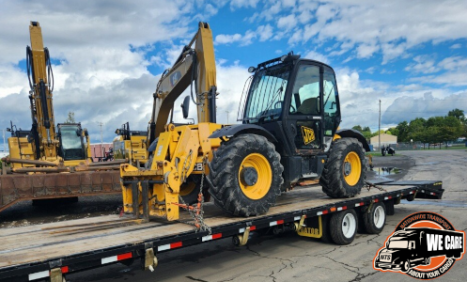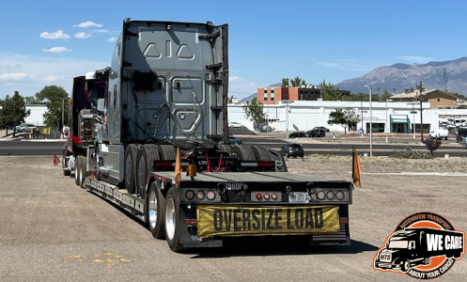Shipping containers, also called storage containers, are large boxes designed to protect goods in transit. They are typically steel, though some are aluminum — these are suitable for storage but not robust enough for cargo shipping. Containers are available in various sizes for mounting on flatbed trucks, rail cars and cargo ships.
You can buy a shipping container, but renting brings many more benefits. Here’s everything you need to know about renting a shipping container.
The Purpose of Shipping Containers
As their name suggests, shipping containers are primarily for transportation and storage. People also construct buildings with them.
1. Transportation
Containers make transporting various goods more efficient. Shipping items in bulk increases productivity, decreases delivery time and reduces costs. It also decreases the time spent transferring goods from one mode of transportation to another, since shipping crews can move the entire container from a rail car to a cargo ship instead of moving each item individually. Modern shipping containers are also more secure than smaller crates and boxes, protecting goods from damage and theft.
Using standard-sized shipping containers is especially advantageous for international transport. Cargo ships can carry more containers when they are a uniform size and fit together seamlessly.
With international transport, workers often place goods in the container at the factory. They seal the container and send it to the buyer. The container remains closed until it gets to the purchaser unless customs agents open it for inspection. The container then travels by truck or train to a port, where dock workers transfer it to a boat. It travels by ocean with hundreds of other containers to another port. Once the container clears customs, it travels to the purchaser again by truck or train.
Domestic transport only involves trucks or rail cars.
2. Storage
Shipping containers are an excellent choice for long- or short-term storage. They protect their contents from the elements and are watertight when closed correctly. These containers aren’t suitable for temperature-sensitive goods, since they have no climate control or insulation.
Here are some common storage uses for cargo containers.
- Construction sites: Shipping containers secure smaller tools and equipment on construction sites when there isn’t a safe indoor space yet.
- Renovation: They are also helpful for storing furniture and other belongings during residential and commercial remodeling projects.
- Agriculture: Like construction companies, agricultural operations can use cargo containers to secure equipment, tools and supplies.
- Retail: Stores can use shipping containers as a small warehouse-type space during busy periods when on-site storage isn’t large enough.
3. Construction
More people are incorporating shipping containers in modern construction projects. Architects stack containers to make apartment complexes or office buildings or combine them with traditional construction to create unique homes. People also build many structures out of single containers.
- Accessory dwelling units: An ADU is a separate living space on the same property as a larger house. Also called a guest house or granny flat, an ADU includes a sleeping area, a bathroom and a kitchen.
- Office or studio: Containers can make excellent home offices or hobby areas. Create a home gym, art studio or meeting place. A container can be a wood shop, rec room or quiet space away from the rest of the household.
- Educational space: Schools can use shipping containers as overflow classrooms if the student body has outgrown the facilities.
You can’t modify a rented container, so you’ll need to buy one if you want to convert it to interior space.
Pros and Cons of Renting Shipping Containers
Renting shipping containers has many benefits, but there are also some drawbacks to consider.
1. Advantages
Renting is a good option if you are making a one-way shipment or need containers for a short time. Here are some of the primary advantages.
- Financial flexibility: Renting requires a smaller upfront investment, so you can use your funds elsewhere without tying them up in a sizable purchase.
- Short-term needs: Renting is an efficient, cost-effective solution if you only need containers for a short time.
- Changing needs: If you need a larger or smaller container, you can often upgrade or downgrade to a more suitable size.
- Maintenance: When you rent a container, its owner is often responsible for upkeep.
- Storage: You don’t have to worry about where to keep your shipping container when you aren’t using it.
2. Drawbacks
Renting also comes with some downsides. Here are some of the disadvantages of renting cargo containers.
- Higher costs over time: Renting containers can cost more for long-term use.
- Lack of ownership: While buying a shipping container is a significant investment, you can see a return on that investment by renting out your container when you aren’t using it or reselling it if you don’t need it anymore.
- Daily or indefinite use: Buying is generally better for year-round, daily use, especially if you’re using the container for long-term storage or aren’t sure how long you need it.
- Fewer options: When renting, you may have fewer options for container sizes and types.
The Renting Process
Renting a shipping container varies depending on which company you use. However, freight container rentals generally follow similar steps. Here’s how to rent a container.
1. Identifying Needs
The first step is identifying your needs. Determine what size and type of container you think you’ll need and how long you’ll need it.
Shipping containers are available in several standard sizes. The most common lengths are:
- 10 feet
- 20 feet
- 40 feet
- 48 feet
- 53 feet
Shipping containers are about 8 feet wide and either 8.5 feet or 9.5 feet tall. Taller containers are high cubes.
Containers used for international shipping are 20 feet or 40 feet long. Domestic shipping containers are bigger, at 48 feet or 53 feet long. Ten-foot-long containers are best for storage or construction rather than shipping.
Shipping containers also have various door configurations.
- Single door: A single-door container has a double door on one short side. This configuration is the most common.
- Double door: These containers have doors on both short ends.
- Side door: Side-door containers open along the entire long side.
Your required container length will affect the lease that best fits your needs.
- One-way leases: These leases vary in duration but are only to one destination. One-way leases can be less expensive, but the shipper generally chooses the drop-off location.
- Short-term leases: Short-term leases are usually longer than six months but shorter than five years.
- Long-term leases: These leases are longer than five years. Sometimes, the renter is responsible for maintenance.
- Master leases: Master leases can be for any length, and the container owner handles all maintenance.
2. Finding a Vendor
When searching for a vendor, you’ll want to ask questions about what they provide. Be sure you understand what their quote includes, so you can prepare for additional fees. Choosing a licensed and bonded company protects you if anything goes wrong.
If you’re renting from a shipping company to transport goods, ask about their network size, cargo tracking abilities and whether their estimates are binding or non-binding. A binding estimate means you won’t pay more than the listed price, while a non-binding estimate could change after the carrier weighs the freight. You should also ask what documentation you’ll need for the shipment.
3. Inspecting the Container
If possible, inspect a container before you agree to rent it. Otherwise, check it thoroughly once it arrives so you can note any existing issues. Look for:
- Rust
- Proper seals
- Door functionality
- Structural integrity
Some leasing companies conduct a container survey themselves for insurance purposes.
4. Understanding the Rental Agreement
Finally, be sure you understand all the terms in the rental agreement. Points that should be present include:
- Lease length
- Cost per month
- Container type and condition
- Who is responsible for maintenance
- Delivery day, time frame and location
Costs Involved in Renting a Shipping Container
Renting a shipping container involves several charges. Here are the primary costs of renting.
- Rental charges: Containers typically have monthly rental charges based on the container size, the lease length and whether you handle maintenance. Containers can cost less than $100 per month.
- Delivery charges: In addition to the monthly rent, you may also pay a delivery fee depending on how far you are from the provider’s location and how accessible the drop-off spot is.
- Return charges: Similarly, you may also pay a pickup fee to return the container, depending on your location and accessibility.
Permits and Zoning While Renting Shipping Containers
Whether you’re using cargo containers to transport goods or as a stationary storage space, you’ll need to comply with permitting and zoning regulations and laws.
- Municipal permits: You’ll need a permit for storing or shipping your container. Permitting rules vary by location, but municipalities are more likely to require permits for situating a storage container on your property in an urban area. Check with your local government to see what permits you may need.
- Zoning laws: You should also check local zoning laws if you want to use a container for storage, especially if you plan to place it in your yard. Laws may differ based on how long you plan to keep your storage container. For example, your city may allow short-term storage, but not long-term storage.
Insurance and Protection Plan
Be sure to ask about what the container owner or shipping company covers. Generally, shippers are not responsible for any damage to containers or their cargo. Ensure you have insurance to protect your shipment from theft, damage, natural disasters and other loss types.
Even if you’re using the container for storage, you may want insurance or a protection plan to cover any damages that could occur.
Cargo insurance costs depend on the destination, transportation mode and the goods’ nature and value. If you don’t have an invoice, market value determines the shipment’s worth.
Contact Nationwide Transport Services for Container Shipping
If you’re looking for shipping containers for rent to transport goods, Nationwide Transport Services is here to help. Since 2009, we’ve been helping people find the best shipping solutions. We assign one logistics agent to handle your needs, from suggesting trailer types and sizes to planning transportation routes. We also acquire all necessary permits for shipping containers and provide cranes, ramps and additional equipment as needed. Nationwide Transport Services is licensed, bonded and insured, so you can feel confident that your shipment is safe.
Learn more about our container shipment services, or reach out today to get a shipping quote.


